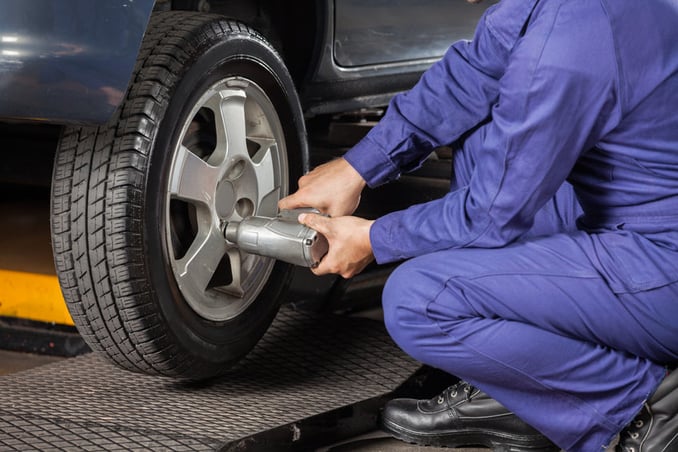Morris Tires: Your Destination for GMC Tires Service Excellence
Tire Solution: The Impact of Weather
When it concerns making sure ideal performance and safety and security on the roadway, comprehending the influence of climate condition on tire service is important. From scorching heat to icy roads, each climate component can substantially affect tire performance and total driving experience. By delving into the results of varying climate condition on tires, chauffeurs can acquire beneficial understandings that may enhance their vehicle's efficiency and long life. In this conversation, we will discover the intricate connection between weather conditions and tire service, clarifying the significance of weather-specific tire upkeep techniques and considerations.
Warm and Tire Performance
When subjected to high temperatures, tires experience changes in efficiency that can considerably impact automobile safety and handling. The warm created from prolonged driving or hot weather conditions triggers the tire rubber to soften, leading to minimized walk life and increased wear.

Cold Climate Effects
Winter conditions can have a considerable effect on tire performance and security. As temperatures decline, tire rubber can harden, causing lowered grip on icy or snow-covered roadways. In winter, tires might likewise lose air pressure more quickly, which can affect handling and fuel performance. In addition, cold temperatures can trigger tire sidewalls to stiffen, increasing the threat of damage from potholes or various other roadway threats.
To mitigate the effects of winter on tires, it is important to routinely examine tire stress and inflate them to the manufacturer's advised levels. Making use of winter or all-season tires developed for winter problems can likewise boost traction and hold on icy or snowy roadways. Correct tire upkeep, including routine assessments for wear and damage, ends up being even extra important throughout colder months to ensure optimum performance and safety.
Rainy Conditions Influence
Throughout rainy conditions, tire performance and safety can be substantially influenced by the wet roadway surfaces and reduced exposure. The walk pattern of tires plays an essential role in keeping traction on damp roadways. Tires with worn-out treads are more vulnerable to hydroplaning, where a layer of water accumulates in between the tire and the road surface area, causing loss of grip. To fight this, chauffeurs ought to frequently inspect their tires for appropriate tread depth and think about spending in tires especially developed for damp conditions.
Additionally, rainy weather condition can also reduce exposure, making it challenging for drivers to see the roadway ahead clearly (GMC Tire Service). In such problems, it is vital to change driving rates accordingly and keep a secure complying with range to permit unexpected quits. Effectively inflated tires can additionally help in keeping control on damp roads by giving much better handling and grasp
Snow and Tire Safety
Snow-covered roads pose one-of-a-kind challenges for read more motorists, highlighting the relevance of proper tire choice and upkeep. When driving in snowy conditions, having the ideal tires can make a considerable distinction in safety and security and performance. Winter season tires are created with unique rubber compounds and tread patterns to give better traction on snow and ice contrasted to all-season tires. The deeper footsteps and sipes of winter months tires help grip the road much better, reducing the risk of moving and sliding.

It is crucial to comply with producer directions when setting up and using tire chains to avoid damages to the tires and car. By selecting the right tires, preserving appropriate inflation, and considering additional grip aids like tire chains, vehicle drivers can enhance their safety and security when browsing snow-covered roadways.
Weather-Related Tire Maintenance
When encountered with different weather, proper tire upkeep comes to be a critical aspect of lorry safety and security and performance. Weather-related tire maintenance encompasses a variety of techniques aimed at making certain ideal tire feature and durability in various weather circumstances. One vital aspect of weather-related tire maintenance is tire stress law. Rising and fall temperatures can create tire stress to differ, impacting grip and gas efficiency. On a regular basis examining and adjusting tire stress according to manufacturer suggestions is crucial for secure driving in altering climate condition. Additionally, tire tread depth plays a substantial duty in managing various climate aspects. Tires with sufficient step depth give better hold on damp or icy roadways, lowering the risk of hydroplaning or skidding. Evaluating tire step routinely and changing tires when walk wear gets to a particular deepness is vital for maintaining traction and stability in unfavorable weather condition. By prioritizing weather-related tire maintenance, vehicle drivers can enhance safety and security, enhance lorry performance, and extend the life expectancy of their tires.
Conclusion
In verdict, climate condition have a considerable effect on tire performance and safety and security. From warmth affecting tire stress and wear to cool weather reducing grip, it is necessary to think about the weather when Related Site keeping and utilizing tires. Stormy problems can decrease grip and cause hydroplaning, while snow can increase the danger of crashes if tires why not try here are not correctly equipped. Weather-related tire upkeep is crucial in ensuring optimum efficiency and security when traveling.
In this conversation, we will certainly discover the complex connection in between weather conditions and tire solution, losing light on the value of weather-specific tire maintenance practices and considerations.
